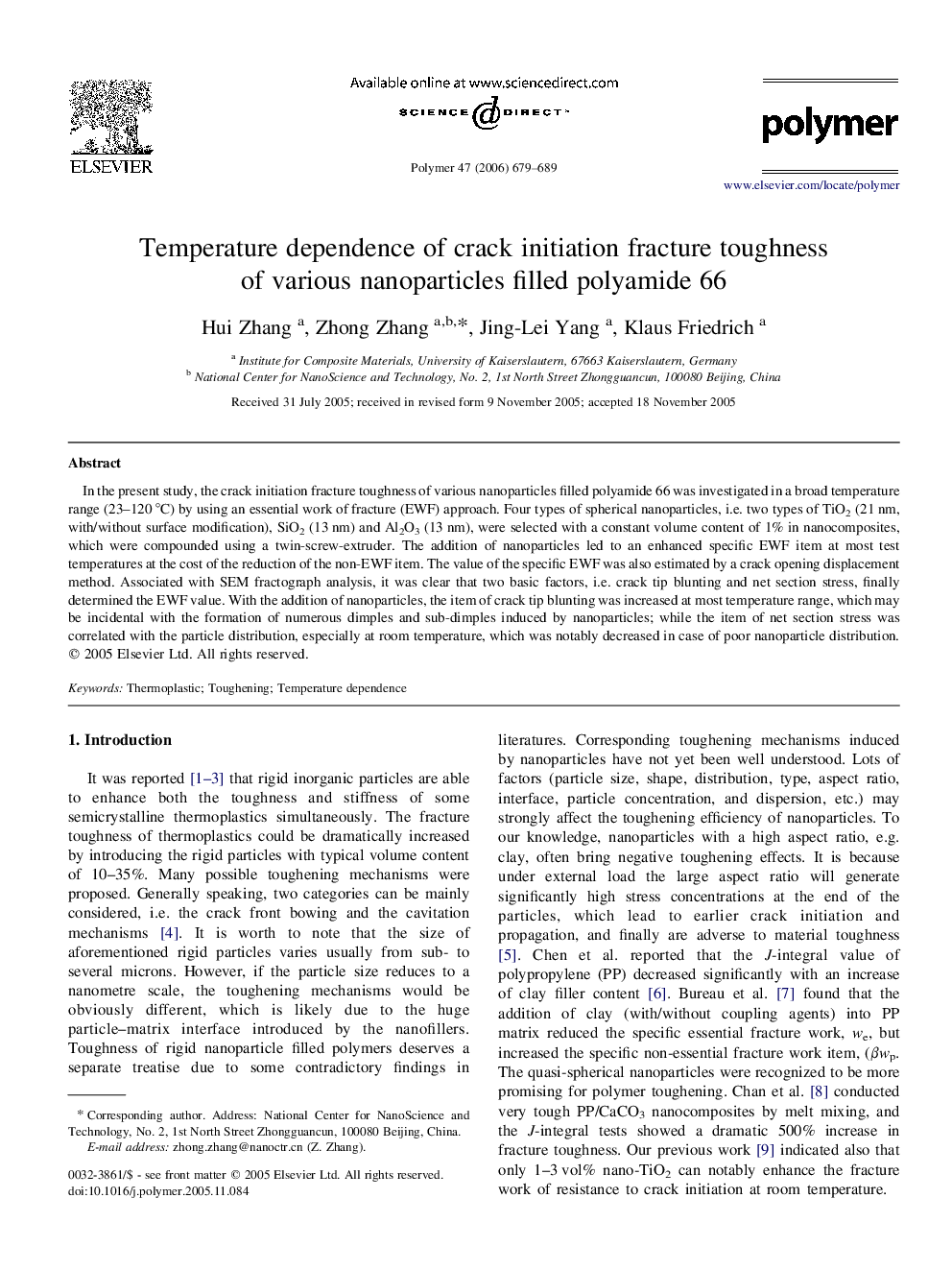| Article ID | Journal | Published Year | Pages | File Type |
|---|---|---|---|---|
| 5189419 | Polymer | 2006 | 11 Pages |
Abstract
In the present study, the crack initiation fracture toughness of various nanoparticles filled polyamide 66 was investigated in a broad temperature range (23-120 °C) by using an essential work of fracture (EWF) approach. Four types of spherical nanoparticles, i.e. two types of TiO2 (21 nm, with/without surface modification), SiO2 (13 nm) and Al2O3 (13 nm), were selected with a constant volume content of 1% in nanocomposites, which were compounded using a twin-screw-extruder. The addition of nanoparticles led to an enhanced specific EWF item at most test temperatures at the cost of the reduction of the non-EWF item. The value of the specific EWF was also estimated by a crack opening displacement method. Associated with SEM fractograph analysis, it was clear that two basic factors, i.e. crack tip blunting and net section stress, finally determined the EWF value. With the addition of nanoparticles, the item of crack tip blunting was increased at most temperature range, which may be incidental with the formation of numerous dimples and sub-dimples induced by nanoparticles; while the item of net section stress was correlated with the particle distribution, especially at room temperature, which was notably decreased in case of poor nanoparticle distribution.
Related Topics
Physical Sciences and Engineering
Chemistry
Organic Chemistry
Authors
Hui Zhang, Zhong Zhang, Jing-Lei Yang, Klaus Friedrich,
